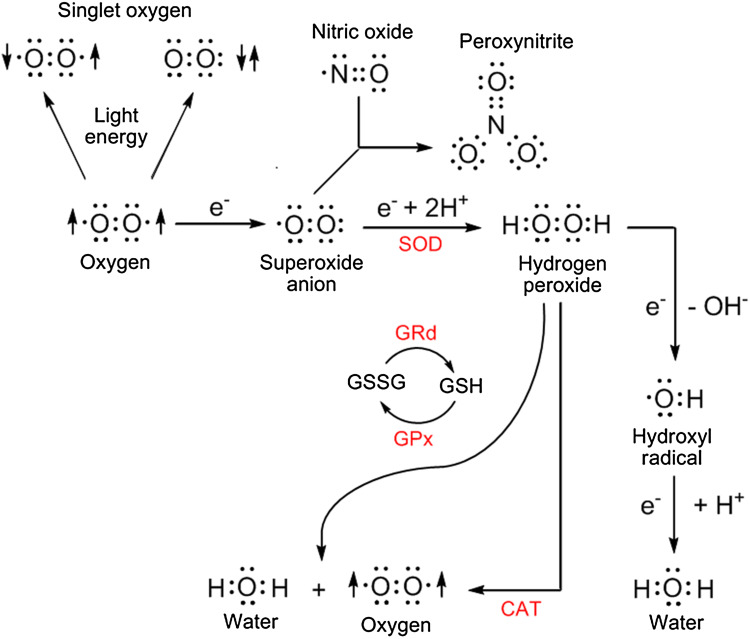Fig. 1.
A small percentage of oxygen inhaled/utilized by aerobic organisms generates oxygen-based derivatives, often called reactive oxygen species (ROS), that can damage critical molecules within cells. Some of the derivatives are free radicals [with an unpaired electron represented by the dot (·)] and others are not, e.g., hydrogen peroxide. The superoxide anion radical is quickly metabolized by superoxide dismutase (SOD) to hydrogen peroxide which can be removed from the intracellular environment by either catalase (CAT) or glutathione peroxidase (GPx). Oxidized glutathione (GSSG) is converted back to reduced glutathione (GSH) by glutathione reductase (GRd). The most destructive derivatives of oxygen are the hydroxyl radical and peroxynitrite. The hydroxyl radical is formed from hydrogen peroxide during the Fenton reaction and peroxynitrite is generated when the superoxide anion couples with nitric oxide. A large percentage of the ROS formed within cells is produced in mitochondria as a consequence of the leakage of electrons (e−) from the electron transport chain

